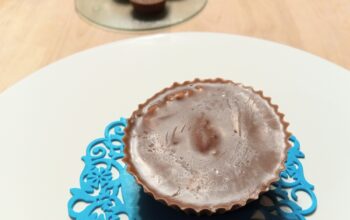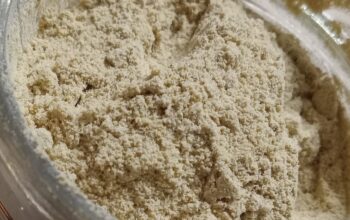Dijon No-Mustard
I grew up not eating mustard of any kind, even the condiment. I tasted it once out of curiosity and wondered how anyone liked it. Mustard is an irritating fiery spice and it degrades the blood. Added to this, the condiment also has distilled vinegar, which is also injurious to the body’s system.
In Counsels on Diets and Foods, point 573 on page 325.1, it states: “In this fast age, the less exciting the food, the better. Condiments are injurious in their nature. Mustard, pepper, spices, pickles, and other things of a like character irritate the stomach and make the blood feverish and impure.” We must keep our blood pure at all cost, including our spices. Not that our foods should be unpalatable (See Christian Temperance and Bible Hygiene, p. 48.3), but taste should not be the criterion on which to use unhealthful spices (See Counsels on Diets and Foods, p. 195.3). Mustard, the spice, has wonderful medicinal value, but should not be consumed as a food (Back to Eden, p. 159 ). Medicinally, it aids to quell vomiting steeped as a tea, to reduce congestion as a foot bath, and to rid the body of respiratory tract diseases as a poultice.
So, I strayed from the diet of my childhood by incorporating dijon mustard into salad dressings and other foods for a time. Now that I am returning to the diet of my childhood, I thought I would have to give up many foods, especially the salad dressings, that I loved so much. Like many of you, I did not know a mustard-free mustard existed. Well, turns out long ago, one ingenious Seventh-Day Adventist created a yellow mustard condiment recipe without using any mustard spice. I happened upon this when I was looking for a ketchup recipe free of vinegar. To be sure I rarely make a recipe exactly, so this one immediately became my own by making it oil-free. If I can find the link to the one I found a few years back, I’ll post it here. I have the version I changed saved, but I have not been able to find that original recipe.
UPDATE 11/10/2020 —Y’all!!! I can only give the glory to the Lord. In pondering what can be a HEALTHY and non-stimulating substitute for mustard, I awoke in the early hours of the morning with an epiphany — MUSTARD GREENS!!! That day, I did my research and found that mustard greens have the same flavor as mustard seeds/spice/mustard. I wondered, has anyone thought of this before, but my research revealed that there is not another soul online at least that has ever thought of this. Consequently, I praise the Lord for revealing this to me. That day I bought like four heads of mustard greens and juiced them and then concentrated them. It worked, but that was a lot of work — it was not a simple substitute. I have a dear friend that I speak with and told her about this epiphany. She suggested mustard green microgreens. Aha!!!! That’s it, except I did not have any on hand. It would take me three months to get some; and I sprouted them. Just as sprouts, I tested it out in one recipe and YESSSSS!!!! You can wait until the sprouts mature into microgreens or you can simply use the sprouts, it is up to you!
UPDATE 3/13/2021 —Hmm… y’all…. whenever I want mustard on anything, I just blend up the sprouts. I don’t even bother making the recipe below, but I’ll keep it here for those who are still making it. In my potato salad, I just through the fresh sprouts. Taste amazing to me! I blend these sprouts directly in salad dressing, mayo, and whatever else calls for mustard … and no one is the wiser that they are there! So… at present, I am using the simplest thing for mustard without making this recipe… mustard green sprouts/microgreens! If you don’t want a green tint in your recipes, use the sprouts and do not put them in the sun. They’ll be yellow. THE END!!!
UPDATE 3/13/2025 —I removed the recipe because I have not made it since using the mustard green sprouts. I generally blend the sprouts up with the liquid portion of the recipe and it has worked very well for me. You see, mustard green sprouts taste like prepared mustard when blended into recipes because they contain the same natural compounds responsible for mustard’s distinctive flavor—glucosinolates and myrosinase enzymes.
Here’s how it works:
- Glucosinolates are sulfur-containing compounds found in mustard greens, mustard seeds, and other cruciferous vegetables.
- When the plant cells are damaged (by blending, chopping, or chewing), the myrosinase enzyme reacts with glucosinolates, breaking them down into pungent compounds like allyl isothiocyanate—which gives mustard its sharp, spicy bite.
This is the same reaction that happens when mustard seeds are crushed and mixed with liquid to make prepared mustard. Since mustard green sprouts are young but still rich in these compounds, blending them releases the same sharp, peppery flavor, making your dish taste surprisingly like mustard itself!
Try it for yourself and be amazed!





